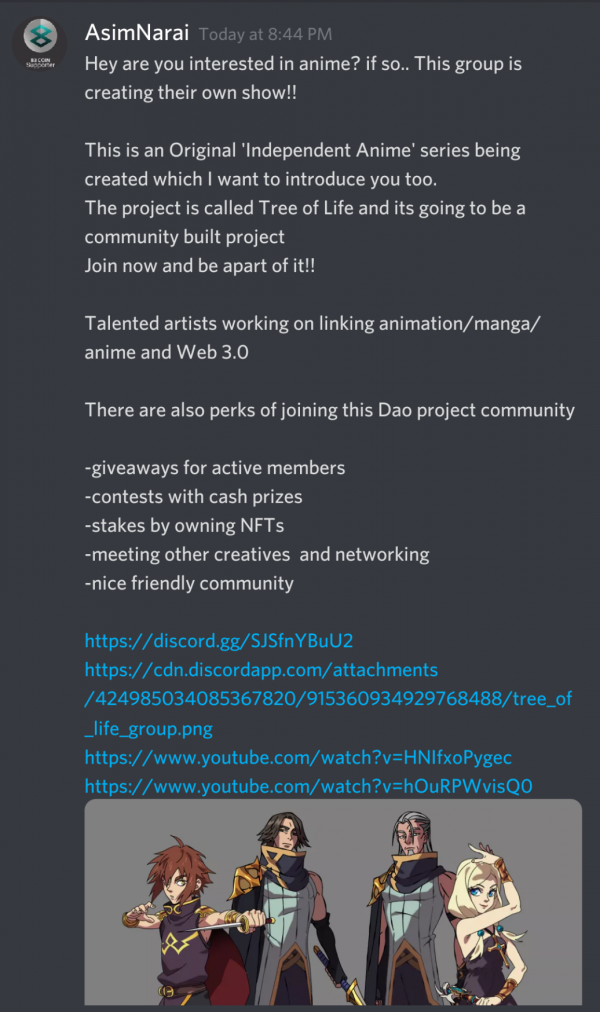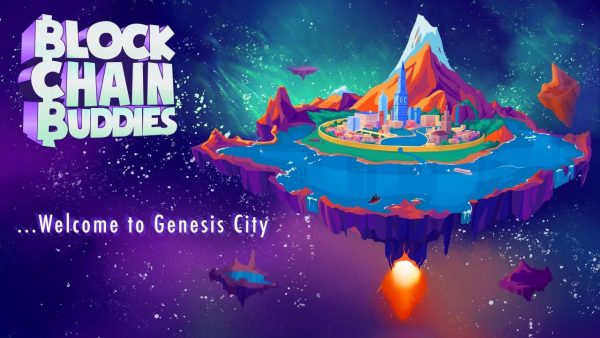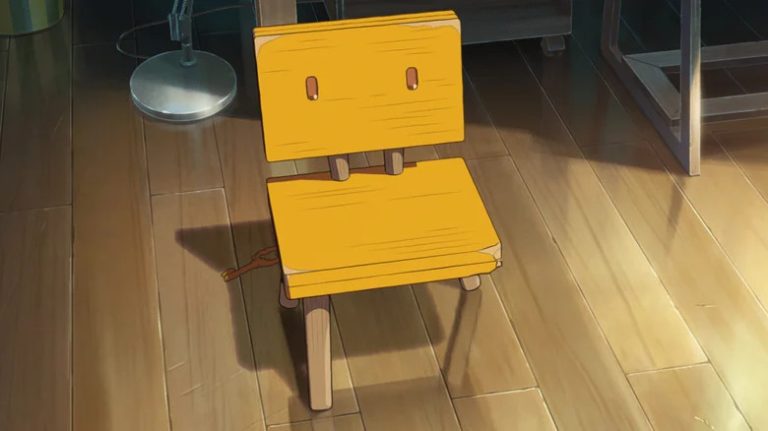Selling the assets of shows and films always seemed like a sort of afterthought for studios. Indeed, many times they were considered waste to be disposed of. (For the life of me, I cannot now locate a link to the story of the entire, yes the entire, set of thousands of production cels from the Back to the Future TV show being put up for auction).
What is an NFT?
The landscape is littered with failed Kickstarter projects as it is. Even major networks cast ideas and pilots aside all the time. Buying into an NFT animated TV show or film comes with ZERO guarantees that you will actually receive what is promised. Trust is wholly on the side of the fan which is why the traditional models of studio/broadcaster financing that’s firewalled from consumers is necessary. NFT-based funding runs roughshod over this; regardless if it’s a legitimate corporation like FOX, or a conman on the internet like in the images above.
How is This Related to Animation?
I dislike the idea of NFTs although the original idea for community-verified ownership remains interesting. I also fail to see enough upsides to exploiting NFTs to create a show. People have found an interesting way of financing their shows and run their cons that skips around necessary laws and regulations. There are similar benefits and pitfalls to simply creating a company that owns a show and inviting fans to by shares. Of course that requires red tape with stiff penalties for fraud. NFTs are, for the moment, free of such government oversight and will wreck havoc until brought under regulation. In the meantime, caveat emptor.
In tying the value of a show to quote/unqoute ‘assets’ there is a possibility that the life-span and indeed the shelf-life of shows becomes smaller. As new shows arrive using similar NFT value propositions, older shows are likely to lose value and ultimately become worthless. What happens than? When a show relies on a market as an intrinsic indicator of its value, what happens if the bottom falls out of the market for a particular show? What if fans rebel en masse and collapse the market for a show?
Blockchain Buddies
If there are upsides, there has to be downsides and they illustrate how NFTs can be a double-edged sword. Bringing fans closer to the creators will make conflicts both more inevitable, and disruptive. If creators want to go one direction and fans want to go in another, who has the final say? Do creators need a ‘Code of Conduct’ for fans?
Non-Fungible Tokens (NFTs) are the buzzword/fad/hot thing of the moment. FOX’s recent announcement that they were working on a show using the technology proved an inspiration to others but can the technology and the hype surrounding it be used to scam fans? It’s easier than you may think.
Buying into an NFT-based show is akin to a rigged hoop-toss game at a carnival. The prize is right in front of you but only the game operator knows whether you can actually win or not.
NFTs on the other hand…
NFT Positives
Disclaimer that the below is not intended to be, or should be interpreted as, financial advice. Always consult a registered financial advisor prior to making any investments
Investing is not for the faint-hearted and serious investors will always undertake their due-diligence before committing to an investment. That due-diligence is a thorough and intensely critical look at the investment being offered, but also its potential relative to other investments. For example, if you’re thinking of buying stock in The Walt Disney Company, you want to be really sure that the value of the stock is going to go up, but you also want to be really really sure that stock in Netflix isn’t going to go up by even more. Smart investors hedge their bets and buy stock in both companies.
NFT Negatives
The image above is typical of the scam. It promotes all the benefits of buying in; even providing links that from first glance provide credibility. Clicking on the YouTube links brings you to something very different however. Animation-based NFTs frauds emphasise a community-based, common-interest, vested-ownership in a TV show or film. Yet placing them under a harshly critical light exposes the fraud. They are not simple sales agreements (exchanging money for goods or services), they are investment vehicles that require the exchange of money for an economic asset (the NFT).
They’re more like investing in magic beans. Could they sprout a giant beanstalk? It’s possible. Can you sell or trade them to someone else? Sure. What happens if you buy the beans and nothing happens AND you can’t sell them? ¯\_ (?)_/¯
The second is that it shifts animated shows (and films, etc.) away from the consumerist approach to merchandise. Instead of cranking out mass-produced physical items, support is reduced down to a small number of relatively high-cost NFT assets. Fans thus gain more unique things to treasure.
The Scam
In other words, the show creates NFT assets that are purchased by fans. Those fans are then given some sort of say in how the show progresses. This is very similar to the approach that FOX announced with their project and a good indicator of the direction creator see NFT projects developing.
The gist is that since computers can create infinite perfect copies, art loses its inherent rarity factor. Enter the blockchain, essentially a glorified ledger that contains entries for each piece of art with a corresponding entry for the name of the ‘owner’. The ledger is structured such that everyone can see the entries and can therefore agree on the validity of the entries. It’s like a copy of the Mona Lisa; everyone knows the original is owned by the Louvre. An NFT takes that principle and applies it to any piece of artwork (or other ‘asset’); anyone can possess a copy, but only the buyer is listed as the agreed-upon owner.
Fraudsters often use emerging technologies or industries – including Initial Coin Offerings (ICOs) and digital assets – to entice investors as part of a fraudulent or manipulative scheme. For example, they may publicly announce a development that is intended to affect a company’s stock price. Or they may promote a company that claims to be developing products or services relating to the latest news events or trends.


Investing vs. NFTs
NFTs are new, but scams and frauds are not. How this affects animation and animation fans is through a microcap fraud. From the US government:
Enter Non-Fungible Tokens and their promise to allow creators to once-again exploit the rarity factor of their art without having to risk the exposure of having their art out there in limitless quantities.
The project will be a first of its kind interactive animated project, with NFT holding community members empowered to shape the future of the creative universe.
There’s a few positive aspects that I see to all this. The first is that it strengthens the bond between creators and fans. The latter gain a vested interest in the show, and creators can rely on their fans to guide the show in ways that keep them engaged and therefore maintain viability. In business, companies must follow certain rules and regulations pertaining to the relationship between the ownership of the business, and the management who run it. NFTs are unbridled by such worries; people who buy an NFT are not considered an owner in the corporate entity that actually owns the show. (Such is my hunch.)
Here’s an example:
Conclusion
Although FOX announced an NFT-based show a while back, Blockchain Buddies seems to be the first actual animated show to get out there with the technology. Per AWN:





